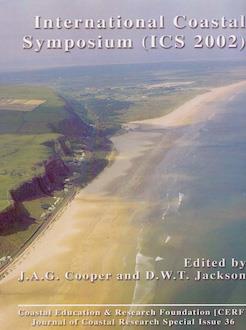Accurate water surface topography data and its spatial and temporal variability provide information about the interaction of physical processes acting in coastal regions. At the inlet system in Teignmouth, UK, these data complement methods for the extraction of nearshore morphology using remotely sensed video techniques. The video methods normally assume that the water surface is horizontal over the region, an assumption that is often invalid in shallow water. The study area is a complex macro-tidal inlet system bounded by a rocky headland and a 2 km-long beach. In order to predict the water surface topography and its response to different tide, wave and river discharge conditions, a calibrated and validated numerical model (MIKE21 HD, NSW) was applied. The water surface topography at the inlet and adjacent coast exhibits high spatial and temporal variability, mainly related to the tidal phase. It is the interaction between the tidal phase and the sandbar morphology, defining the velocity field in the channels, which drives the water surface topography distribution across the region. Since a small, unaccounted, difference in water level may result in significant deviations of the horizontal shoreline position, this study highlights the importance of using numerical modelling in conjunction with the video image techniques for the extraction of nearshore morphology.
How to translate text using browser tools
1 March 2002
Modelling Water Surface Topography at a Complex Inlet System – Teignmouth, UK
Eduardo Siegle,
David A. Huntley,
Mark A. Davidson

Journal of Coastal Research
Vol. 36 • No. sp1
Spring 2002
Vol. 36 • No. sp1
Spring 2002
MIKE21
nearshore hydrodynamics
water elevation
waves




